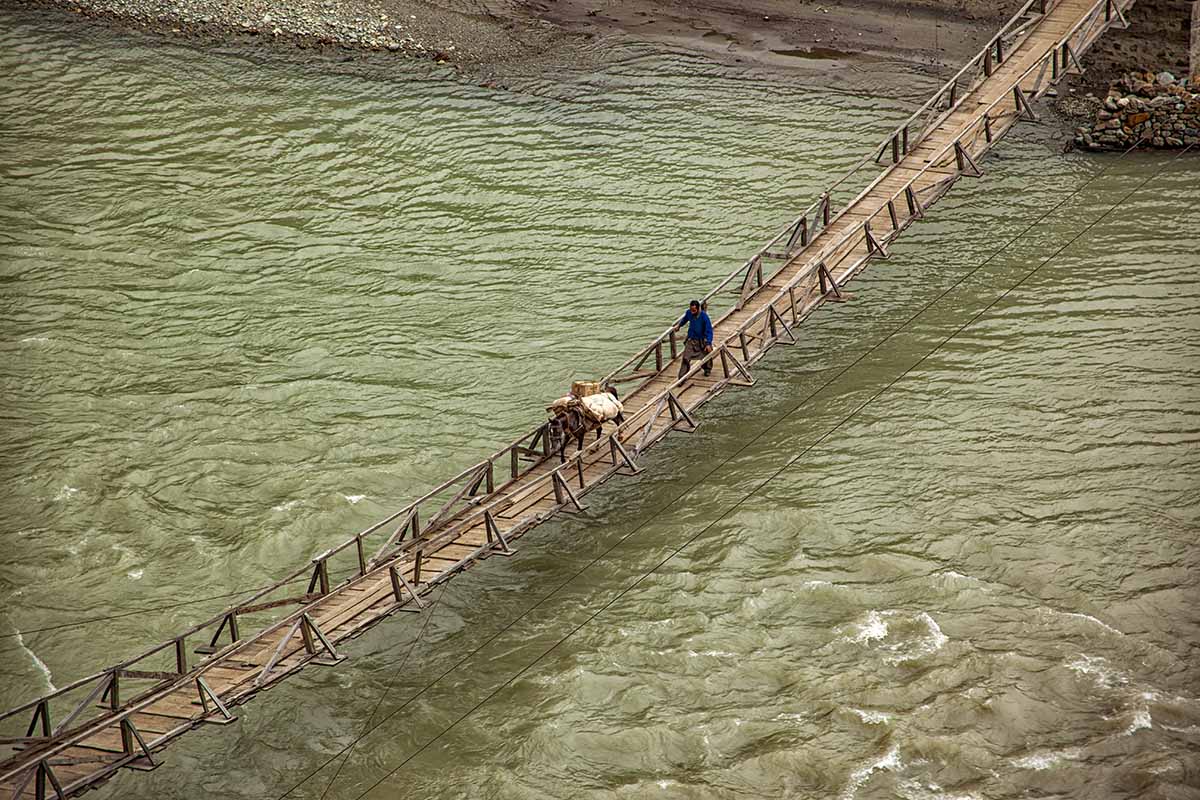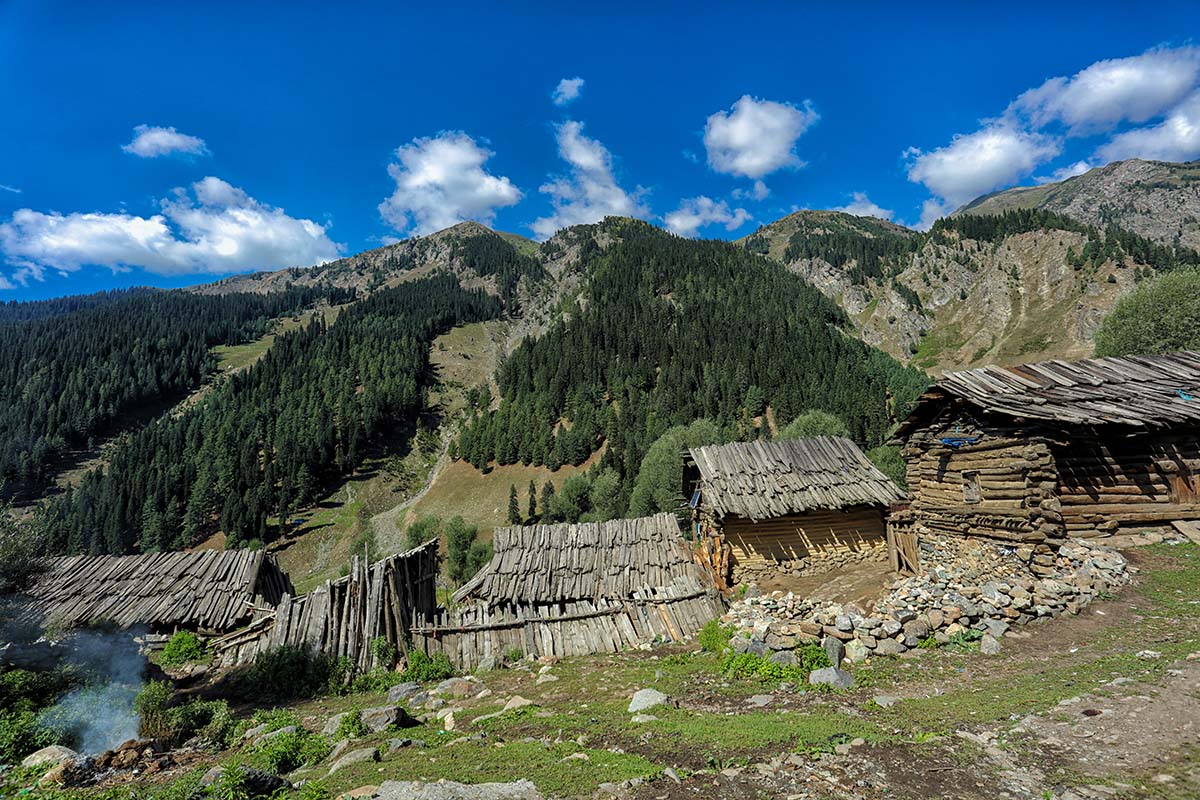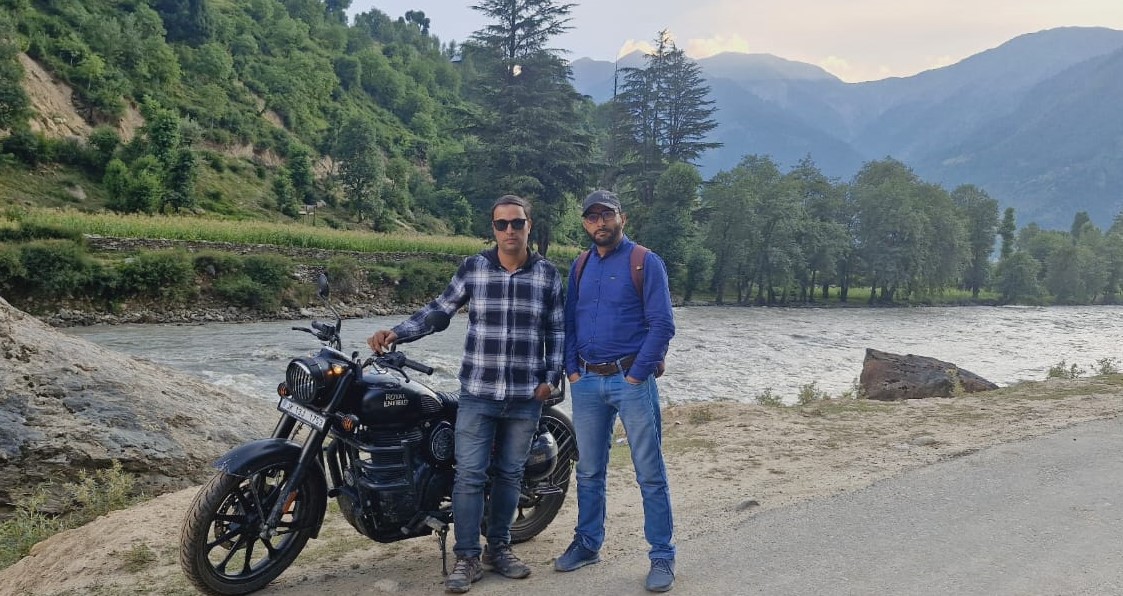From the majestic Margan Top to the secluded Warwan Valley and the pristine Marwah Valley, there hides a perilous yet exhilarating journey through the rarely-visited corners of Kashmir. Dr Nisar Farhad explored the region’s breathtaking mountain passes, stunning landscapes, and hidden gems.

The geographically diverse states of Jammu and Kashmir boast breathtaking mountain passes that offer thrilling adventures. For centuries, these passes have been integral to Kashmir’s folklore, facilitating communication, interaction, and connection among the people. Before the nineteenth century, they served as both barriers and gateways, controlled by those who guarded against infiltration and collected customs and taxes. Traders and communication link operators had lifelong relationships with these passes.
A Breathtaking Adventure
On September 18, 2024, my friend Tariq Ahmad Dar, a teacher at Boys Higher Secondary School, Arihal, invited me on a ride to Margan Top. Accepting without hesitation, I set off immediately and we reached our destination at 12:15 pm.
At an elevation of 14,000 ft and 112 kilometres from Pulwama, Margan Top offered a stunning 360-degree panorama of lush meadows and treacherous forests, earning its nickname the Valley of Death.
This alluring mountain pass connects the remote valleys of Warwan and Marwah to Vailoo in Anantnag. Four exquisite small lakes, locally known as Choharnag, adorn the pass, situated 3 kilometres from the primary road. At the mountain’s summit, these high-altitude lakes create an atmosphere of serenity.
As the Sun warms the landscape, vibrant wildflowers blanket the surrounding meadows, painting them in a cascade of colours. Thousands of sheep and goats graze on the expansive grasslands, tended by local Gujjar and Bakerwal tribe members during the season.

Pristine Landscapes
The picturesque setting of the long stretches of grasslands adds to the pastoral charm of the region, tempered, however, by the sorrow of locals who have lost loved ones to its dangers.
I embarked on the second leg of my journey at 3:30 pm, bound for Warwan Valley, and reached the first village, Inshan, at 4:30 pm, 25 kilometres from Margan Top.
Warwan Valley is a hidden gem, displaying the pristine landscapes that characterise Kashmir’s untouched corners. Towering peaks and alpine lakes encircle the valley, offering a retreat into nature’s embrace, far from the hustle and bustle of modern life.
After spending some time in Inshan, I drove down to the other side of the pass, a beautiful wide valley soon unfolding before me, lush green terraced fields divided by a meandering rivulet called the Dariya-e-Chenab. The valley is home to 17 villages, including Sukhnai, Margi, Busmina, Aftee, Dasbala, Sarkund, Rekinwas, Zonhang, and Bata. These villages have schools and dispensaries with minimal staff, but no electricity or internet connectivity.
On the left side of the road, a handful of shops gave way to a bridge spanning the river. Agricultural activities dominate the lives of the people of Warwan, but a significant source of income comes from ferrying pilgrims on mules and horses during the month-long Amarnath Yatra.
Into Marwah
Beyond the bridge, the road forks left to Aftee village, 12 kilometres from Inshan. At 5:15 pm, I steered my bike towards the captivating Marwah Valley, arriving at Anjeer, the last motorable village, by 7:00 pm.

Marwah Valley is nestled between Warwan to the northwest, Ladakh and Zanskar to the east, Chatroo and Kishtwar to the south, and Anantnag to the west. The river Marusudar, the largest tributary of the Chenab, drains the area. This pristine valley boasts vast vistas, picturesque meadows, clear streams, and waterfalls.
Discovering Hidden Gems
From Anjeer, we trekked a 3-kilometre mountainous stretch to reach Tatta Pani in Rinaie village at 7:45 pm. We booked a room at Gulzar Ahmad Bhat’s hotel and, after resting, bathed in the hot spring, believed to have medicinal properties that cure rheumatic pains and skin ailments. Hundreds of people from Kishtwar and Kashmir visit annually to bathe and find relief from their ailments.
The Marwah Valley comprises 27 villages, boasting top tourist destinations such as Taata Pani, Sarasnag, Hajan Park, Mudaksar, Nun Kun, and Kandinag.
The next morning, after bathing in the hot spring and having breakfast, we headed back to Marwah’s Teller village, intending to visit Dacchin Valley. We arrived at Teller village at 10:30 am and met many bewildered locals, learning that there is no road connectivity between Teller and Dacchin Valley, only a treacherous 30-kilometre mountainous trek from Kishtwar.
Due to time constraints, we could not proceed but gathered valuable information about Dacchan Valley from the villagers. It boasts three beautiful streams – Kibber Nalla, Ananth Nallah, and Kiyar Nallah – and lush green meadows like Lovmarg, Saterchen, and Nachunbhachun, where nomadic cowherds and shepherds graze their flocks. The region is home to the Kishtwar High Altitude National Park, one of only three in the state.
Perilous yet Exhilarating
Established in February 1981, the park spans 400 sq kilometres, with an altitude range of 1700m to 4800m, featuring 13 vegetation types, 15 large mammal species, and 50 bird species, receiving 760 mm annual rainfall. DacchinValley is dotted with tourist destinations, with its populace mainly inhabiting the river Marwah- Troutrich’s banks.
Despite being in the age of information, this area remains non-descript. All three valleys – Kishtwar, Warwan, and Dacchin, have a Muslim majority population, with a significant Hindu minority, and a predominantly Kashmiri-speaking population, sharing a culture much like the Kashmir.
We arrived back at Margon Top at 2:30 pm. On the way, we encountered numerous bakarwals migrating to high-altitude pastures with their families, accompanied by their livestock.
After taking refreshments at Margon Top, the weather suddenly changed. A blanket of hailstones covered the pass, plunging it into silence. The bone-chilling cold and desolate scenery made the views appear ominous. Our plan to trek to Choharnag was swiftly abandoned.
At 5:30 pm, we began our descent towards Pulwama, my hometown, on the other side of the pass. The road was treacherous – wet and rocky, with potholes, unexpected narrow turns, unmarked speed breakers, signal-less crossings, and construction materials obstructing the road. Despite these obstacles, we arrived home safely at 9:15 pm.
The experience was exhilarating, a reminder that perilous mountain passes often lead to breathtaking destinations.


